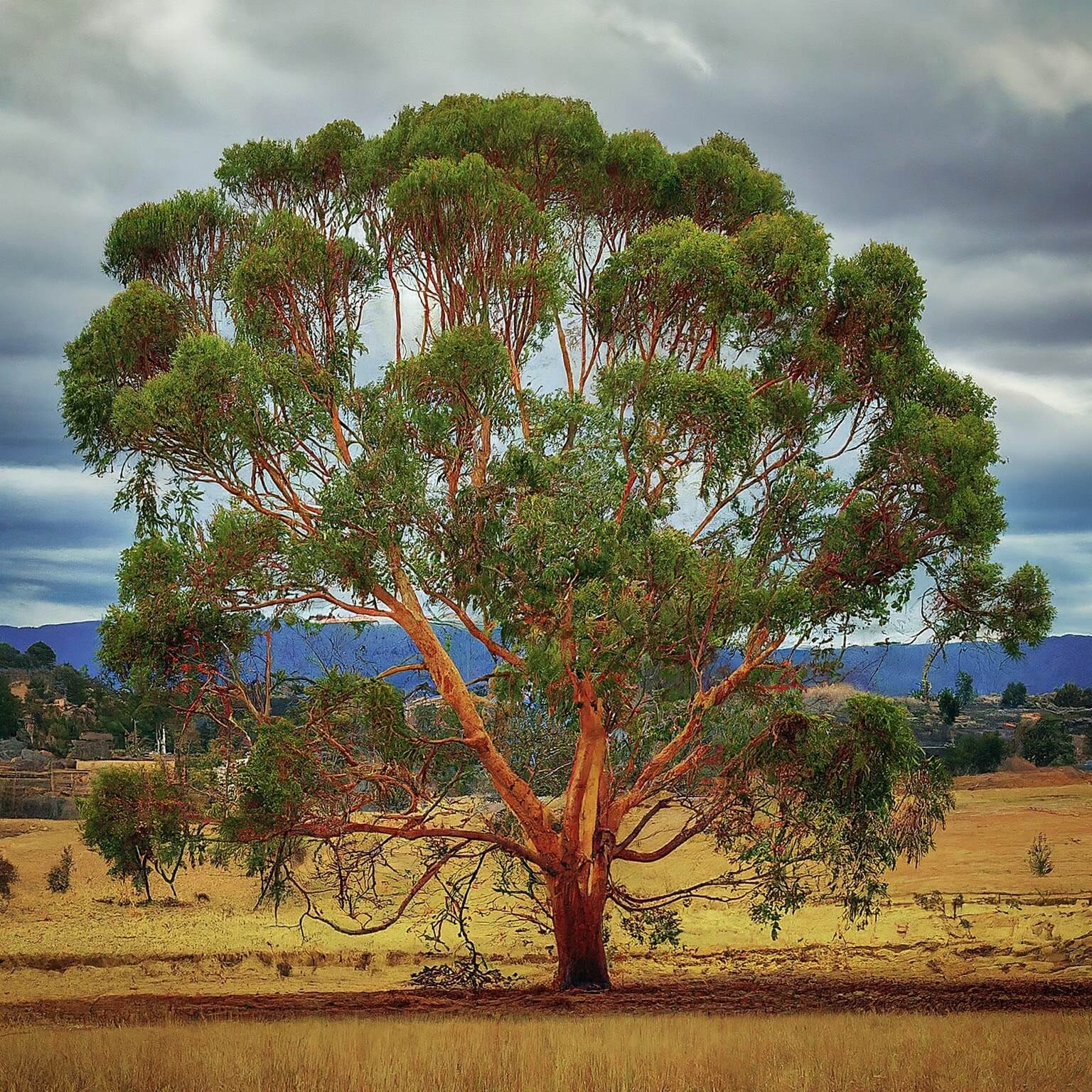A tree growing to 20 m tall, forming a lignotuber.
It is endemic to New South Wales, occurring from west of Nowra on the south coast, north through the lower parts of the Blue Mountains to the Hunter Valley which is it northern limit.
The distinctive bark is a yellowish colour, and flaky, rough in consistency with a somewhat tessellated pattern.
Seedlings have opposite leaves for the first three six pairs, and these are elliptic to lanceolate in shape.
The adult leaves are greyish-green, thick with prominent venation, and lanceolate (spear-shaped) or falcate (sickle-shaped) with a prominent raised yellow midrib and tapering apex, to about 20 cm long and 3 cm wide. They are arranged alternately along the stems and are the same colour above as below the leaf (concolorous).
Corymbia eximia is highly ornamental, especially when in flower, and is occasionally planted as a street or parkland tree. It deserves to be more widely used as it is highly attractive to flower feeding insects and birds. Tolerates light frost, poor soils and drought.
Trees live for over a hundred years.

